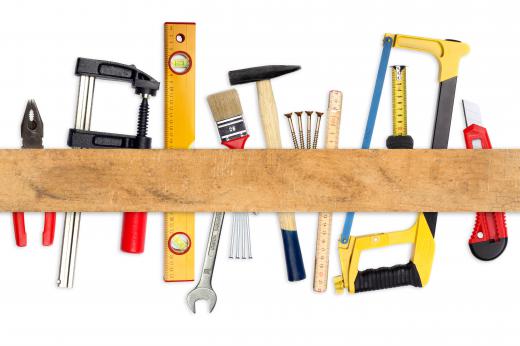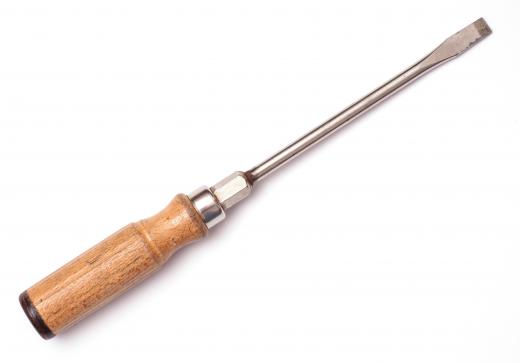Whether you're a seasoned carpenter or simply a do-it-yourself home handyman, you will need an arsenal of hand tools to accomplish a variety of tasks. Some are staples of any toolbox worthy of even the smallest jobs, while others are more obscure and task-specific; regardless of what job you are planning on tackling, you should count on investing in a quality set of tools that will come in handy in numerous situations.
Perhaps the most common and well-known of the hand tools is the hammer, which is designed to drive nails, break apart materials, or pry out nails or boards. It is a versatile tool that can accomplish many tasks, but be sure to invest in the right one. Hammers come in different lengths, which are intended for different jobs. Whatever hammer you decide on, be sure it is a well-built one-piece hammer or a two-piece hammer with the head solidly fixed to the handle.

Other common hand tools you are probably already familiar with are screwdrivers. These come in a variety of sizes as well, and most often come in two different standards: Phillips-style head or flat head. As their name suggests, screwdrivers are used to drive screws into different types of materials.
While many saws you will find in workshops today are powered and motorized, hand saws are still valuable hand tools that should be present in any handyman's quiver. Countless varieties of hand saws exist, and some saws are designed to cut through specific materials--for example, a hacksaw is designed to cut through metal and cuts on the push stroke rather than the back stroke, which is common amongst wood saws.

Some hand tools are less glamorous than the ones mentioned above; a tape measure may prove invaluable, however, and save you the hassle of cutting boards at the wrong length. It is useful in any number of situations in which you must measure materials or space in your home. Pliers can pinch and pull stuck bolts, bent metal, or any other material that requires a firm grip your hand can't provide. Wire cutters are the savior of electricians everywhere and make cutting wires extremely easy. They also allow the electrician to strip wires of their casing, exposing the metal filaments inside.

The hand tools you will need will depend on what jobs you intend to tackle. An electrician may not need the same tools a woodworker will need, so be sure to consider what your specific needs will be. A woodworker may need chisels, but an electrician probably won't. Conversely, an electrician may need a voltmeter, but a woodworker probably won't. Choose your hand tools carefully to avoid spending money on tools you won't use.
